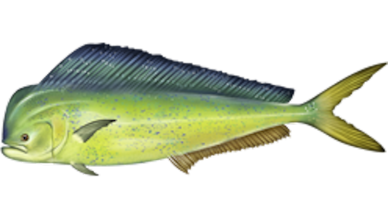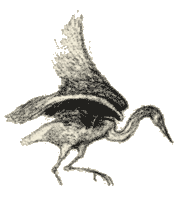This Month's Story

When the large tree fell, it didn’t make much difference to the area around it. The waters from the vicious storm that undermined the soil from which tree grew had already knocked down many such large trees in the South American mountain were it had grown and the tree was carried along with many other such trees in the flood waters down the mountain many miles to the coast before spiting it out into the broad waters of the Pacific Ocean.
This had happened many times to the trees in the mountain highlands and would happen many times more in the years to come after I saw it floating years later a thousand miles away in the vast reaches of the Pacific.
I was aboard a research vessel belonging to what was then called the Bureau of Commercial Fisheries. My position aboard at the time was as an observer. The National Oceanographic Office was funding much of the operating costs of the vessel and had sent me out with the ship to see if the data they were collecting met our requirements.
Actually for me, it was an enjoyable two weeks. The crew was friendly and the ocean data they collected seemed more than adequate for my purposes of my offices.
There were personal differences however. I was the only “howly” or “round eye” on the ship. The rest were of Japanese or Korean descent. Even the captain was a second generation Korean. As a result the food aboard the ship was oriented to their taste. I had spent some time in the orient prior to this particular cruise and this was not really a problem except for the annoying fact that there was always a large pot of Poi or rice aboard the ship whereas I was customarily used to having coffee always on hand.
Since I had nothing really important to do, I volunteered to stand a midnight watch. This amounted to me helping lower the ship’s special oceanographic instruments down thousands of meter deep into the Pacific waters depths.
During the day, I was on my own and spent my days high up on the ship’s bridge watching the ever changing ocean. An interesting aspect of this was that differently than most of the ships on which I had previously sailed was that besides the standard bridge crew, there were always two specially trained lookouts on the bridge, one on port side and the other on the starboard side. These were always Japanese. They would watch and record what birds were about us even those barely visible miles away on the horizon. Their ability to identify birds at fantastic distances was unbelievable.
Most importantly, they could also tell what type of fish the birds were feeding on by the way the birds flew. This data was later plotted onto maps correlating the ships positions and the birds sighting and the fishing they did. From this bird and fish specialists could later define the routings of bird and fish migrations.
So it was a relaxed pleasant trip with good friends.
However, on one of those halcyon days when I was leaning on the chart table half dozing, when the port lookout came running inside yelling, “A tree! A tree!”
Everyone about me exploded with activity. The captain went to the port side with a set of binoculars and verifying that there was indeed a large tree floating in the water about a quarter mile from the ship. Even I could see it. He rushed inside and did several things: he blew the ships whistle loudly several times, shouted instructions to the helmsman, and the grabbing me and a large gaff standing beside the chart table hustled me below, the two of us moving at top speed toward the stern of the ship.
As we raced aft, I felt the ships sharply to port and as we ran below and aft, I could feel the ship heel sharply away from its course into the direction of the large tree. All I could hear from the captain as he hustled me and my questions along was “It’s a tree! You’ll see in a minute! Hurry!”
When we got to the stern we found a number of the ships’ crew had arrived ahead of us. About five strong fish lines had been tied along the ship’s after railing and these men were hastily baited the large fish hook on the end of each line and tossing the line into the white churning waters of the ships wake.
Within seconds one of the lines hooked a large fish and the line bobbed and swung about the sea several hundred feet aft of the ship’s stern. Then a few seconds later, a second line had a fish impaled on it’s hook.
I watched amazed. Within ten minutes, as the ship began a broad sweeping turn about the tree, there were five fish hooked on the lines and the men using the gaff we had brought from the bridge were soon hauling them onto the ship’s stern deck.
The captain grinned at me.
“Mai Mai.”
Looking at the large fish (they averaged a good five feet each), I realized what we were doing.
It was all basically the result of the tree! It had been floating in the ocean for months, more likely years. As it floated, the tree had slowly disintegrated, dropping as it did so, small bits of material into the sea. Small marine life had gathered to live on this edible rain of material. Soon larger marine life had in turn gathered to eat these smaller marine creatures. Larger Marine creatures in turn gathered to eat these smaller creatures and soon larger fish ate these and then even larger fish had joined the feasting until with time a large living biomass had assembled; all forming a chain of life had been established, all originating on the decay on the slowly decomposing tree.
From what I could see the tree was huge and would probably last for several years as the basic source of this large biomass. Now, looking at the happy crew looking hungrily at the large fish lying on the steel after deck, we were the end point of this bio-chain. Almost all of the crew were descendents of seafaring people, almost all had lived at one time or another as fishermen. Certainly the lookouts had honed their skills earlier in their lives on being able to see birds far away from their fishing vessel and thus ensuring the success of the fish captured by the fishing ship.
Someday that tree would end as a source of life and the large biomass we were engulfed in would dwindle and disappear, but there are other trees such as this adrift in the sea and the process I saw here was and would be repeated again and again on this broad sea.
There was a difference here slightly more universal to the sea as a whole. The Mai Mai I was seeing here on the deck were the wolves of the sea and others such as these roamed the broad sea looking for largesse such as this to survive. It could be a tree or the downstream wake of some island. Whatever, they were adaptable and what we were seeing here was a constant in the oceans events.

And so was the crew of this research vessel would have excellent meals that night’s supper that night and for several succeeding nights.
But there is more to this particular story then what I’ve said here; a more personal note. The captain went up to one of the large fish that was flapping rather viciously on the deck. A crew member handed him a baseball bat and he hit the fish hard, two or three time. Then reaching for his knife, he pulled a large piece of the still flapping fish and turned to me.
“Paul, we have had you aboard for more than two weeks. We’ve enjoyed having you as our guest. Please be the first to take part off this fish as a token of our enjoyment of having you with us.”
I looked around at the beaming, very happy faces of the crew and took the fish piece he offered. It took me a second to take the first bite, but then I am proud to say, I ate the whole thing.
It did not taste like chicken.
